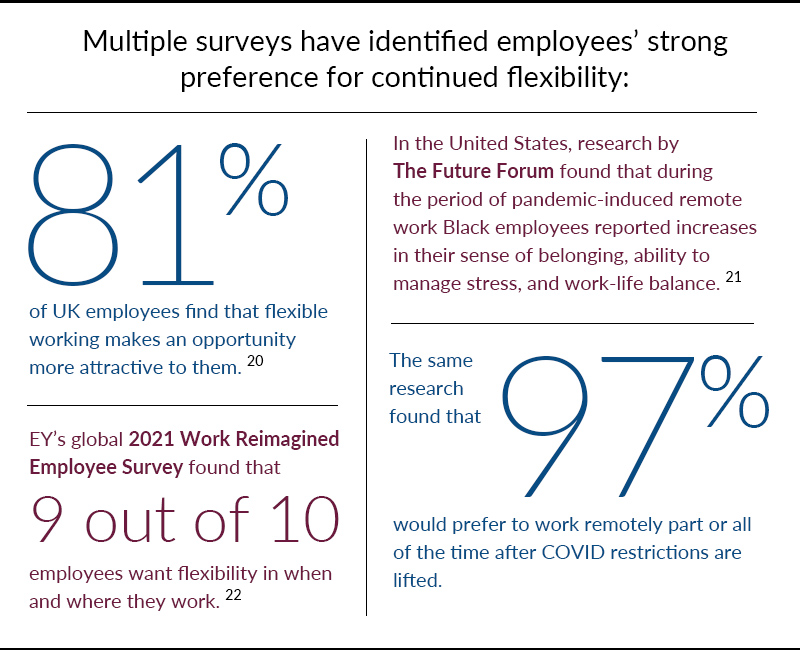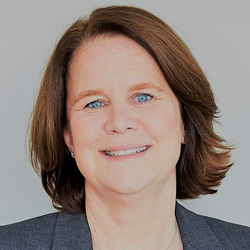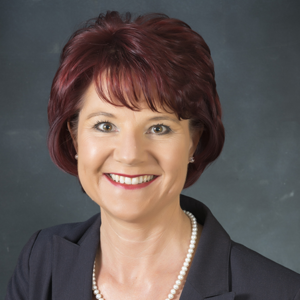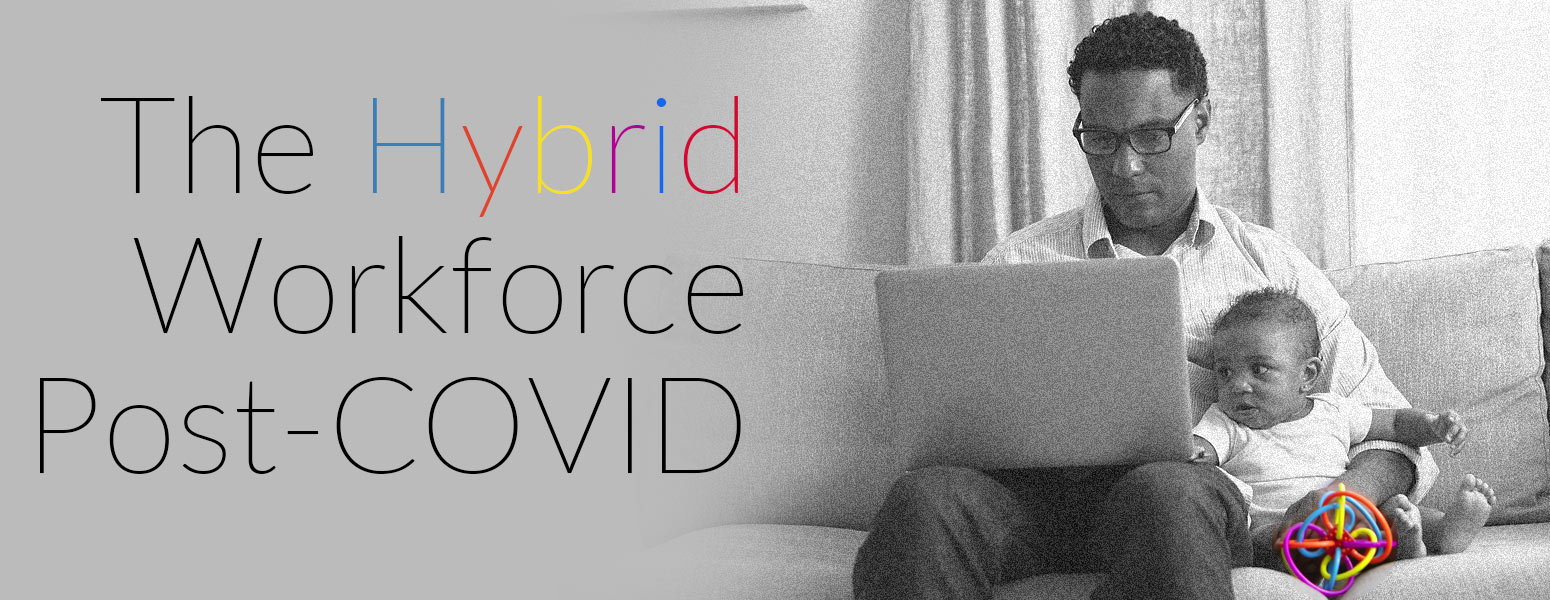Key questions for figuring out what’s next
Could anyone have imagined in January of 2020 that 18 months later we’d have met our colleagues’ pets and children? That those digital tools the IT folks had been pushing (that we resisted) would become second nature? Remote work, flex schedules, tech adoption and other COVID-era adaptations ensured business continuity when so many people suddenly had to work from home.
The workplace flexibility that allowed this massive shift to remote work was already gaining traction in certain environments well before COVID-19, and now it is unlikely that the world will return to pre-pandemic norms. How organizations adapt to this disruption will have significant, lasting implications for organizational success, however that success is measured.
Several critical decision points loom large as organizations imagine and ultimately construct their post-pandemic model: their version of a “hybrid office” and how they make the shift, the implications for recruiting and retention, identifying key leadership skills for a hybrid workforce and addressing hybrid’s impact on people and culture. Ultimately, organizations must answer the question ‘what happens next?’
What does a hybrid workforce mean?
Hybrid work is usually thought of as some combination of remote and on-site work. Planners designing a hybrid workforce model should also consider time in the equation. During the lockdown, remote employees were productive in their own spaces and often, on their own schedules. Does remote work need to be synchronous with the rest of the working team? Many companies that operate in multiple time zones already have asynchronous schedules. When an employee works is as important a consideration as where in a hybrid model. In addition, to what degree do employees choose when and where they work? And is that flexibility afforded to all employees equally?
Allowing hybrid or remote work demonstrates trust in employees and can increase employee satisfaction and productivity, and also introduces significant management challenges.
These are critical questions in an environment where workers proved they could deliver while working remotely. There is both an expectation and strong desire among workers that a hybrid workforce model will remain in the post-pandemic workplace. For example, a global survey conducted by the Boston Consulting Group found that 89% of respondents would work fully or partially remote if given a choice.1 A January survey of employees working for small and mid-sized companies in Japan found that 74% would prefer to keep working remotely.2 However, according to a survey of 500 CEOs from 11 key markets, only three in 10 are considering a hybrid model of working for their staff.3
For context, remote working is not equally accessible. For example, Latin America experienced a rise in teleworking through the pandemic and research suggests 30% of work will continue to be done remotely post-pandemic, though not all countries in Latin America have the infrastructure to allow for large-scale remote work.4 That unequal access is not limited to South America. In Sub-Saharan Africa, for example, only 39% of the continent has Internet access, with the highest penetration in Nigeria and Kenya.5 The least developed countries are without sufficient Internet access, as well as many under-served areas in large economies like the United States and China, limiting the opportunities for remote work in those geographies.
Certain companies and countries are considering a different take on a new model of work: a four-day workweek. The concept is being tested in Spain, Iceland, New Zealand and Japan; in a German tech company, a French car maker, at Shake Shack and at Microsoft.6, 7 Much like the work-from-home experiment during COVID, to date the four-day workweek experiments are showing that productivity is generally as good, if not better, and employee satisfaction and engagement may be going up.
Much of what comes next will be predicated by law. If the government says you’re in lockdown, you’re working remotely. Employee health and safety regulations may or may not extend to the home office or off-premises work site. Data privacy and security standards are complicated by the hybrid model8, and may define the resources employers must provide for their off-site team members.
The model going forward—whatever the blend of time, place, or employee choice—will require tremendous deliberation, care and transparency.

What are the key factors in successfully shifting to a hybrid office?
Best practices in shifting to the hybrid environment are yet to be determined, but key elements are essential to building a hybrid workforce model that works.
1. Intentionality
Like wargames, organizations should plan for multiple scenarios. Have a policy, a set of guidelines to communicate to current and prospective employees. Have the technology in place to support multiple scenarios. Choose the tech, determine the ways you will engage employees. Set expectations—including the expectation that things may change, that the organization may adapt further.
For example, Hubspot allows employees to choose among three options regarding their balance of remote/in-office time, which determines whether they get a permanent desk or a hot desk, and how much the company invests in the employee’s home office, and the company’s practices and policies take special care to not allow any one choice to have advantages over another. 9
German powerhouse Siemens announced that employees worldwide can work from anywhere two to three days per week. In the UK, accountancy firm BDO will let managers and employees choose for themselves when they need to work in the office, whereas investment bank Goldman Sachs, among others, ordered staff to be ready to come back to the office.10 In announcing employee choice in the back-to-work plan at Google, CEO Sundar Pichai told the company, “The future of work is flexibility.”
Allowing hybrid or remote work demonstrates trust in employees and can increase employee satisfaction and productivity, and also introduces significant management challenges.
Hybrid workforce models can create advantages and disadvantages among colleagues. For example, individuals who co-locate with managers and senior leaders are more visible and may therefore be front of mind for new assignments or promotions. Being on-site gives employees the benefit of informal communication and more relationship-building opportunities. Employers can take action to balance the scales:
- Ensure remote workers have access to leadership.
- Design performance reviews that account for visibility levels.
- Create standard processes for contact and communication that are inclusive of remote team members.
- Provide robust training in managing a hybrid team.
- Establish performance expectations and measures of accountability.
In some organizations, certain days will be set aside for teams to come together in one place to create opportunities for collaboration, innovation and relationship building. In others, meetings are virtual if any one participant cannot be on-site, in order to ensure an equal experience. These measures can improve fairness in the design of a hybrid workplace.
Another consideration for organizations creating a hybrid work model is understanding how the legal, liability, regulatory and tax environment applies to hybrid work, particularly for those employees whose corporate offices and remote work locations are in different municipalities governed by different rules.
The Hybrid environment is under construction. The changes in work demanded by the pandemic provided proof of concept: we tried it, we know it works, now we have to find best practices. That requires leadership to be planful and open to change.
2. Wellness in the Hybrid Office
Mental health has emerged as a pressing concern in the months following peak COVID infection rates. Mental health and employee wellness must be addressed by employers going forward.
A key element of talent success in the hybrid workplace is accessibility. Employers need to make sure that when they're thinking about accessibility, they're thinking about it in the broadest sense.
In a world where mental health care was already under-resourced, the pandemic had a damaging impact across societies, with significant hikes in stress, isolation, anxiety and depression. The fear, stress and loneliness commonly experienced by people concerned about their own and their loved ones’ physical and economic security are risk factors for both short-term and long-term mental health problems.11
Overwork is another stressor. The lines between work and home have blurred significantly during the pandemic. While pets and children interrupting Zoom calls are endearing, the work obligations that interrupt or displace rest or family time is unhealthy. During the pandemic, working from home extended the workday an average of 2.5 hours for remote workers in the U.S., Canada, Australia and the U.K.12
What can employees do?
- Tailor your well-being initiatives to the needs of various employee populations. For example, the needs of young families may be different from the needs of people feeling isolated.
- In the absence of face-to-face encounters, it is a challenge to pick up on body language. Managers can fine-tune their observation skills and build trusting relationships with their teams so that individuals experiencing mental health issues can ask for help.
- Some employers require breaks between virtual meetings, and others set meeting-free days each month to relieve the fatigue of back-to-back video calls.
- Follow the “right to disconnect” model which recognizes the problem of 24/7 connectivity and limits the expectation that employees will respond to calls and emails outside of work hours.13
- While many employers provide access to mental health services and resources for self-care, they could incentivize healthy behaviors such as taking breaks, getting exercise, and using vacation time. To ensure that remote workers can take time off without fear of missing something important, some organizations are choosing to shut down over major holidays or during peak vacation times so that at least once or twice a year, employees have restorative time off.
- Consider training leaders, managers and teams on wellness and mental health strategies, and build social connections to prevent team members from feeling isolated.
- Leaders can model healthy behaviors and speak openly about issues surrounding health and wellness, and through their example normalize self-care and prioritize mental as well as physical health.
Some companies and cultures are not as open and accepting about mental health as they are about physical health. Leaders can model healthy behaviors and work toward creating an environment of trust, and by their example can destigmatize self-care. These measures can go a long way to safeguarding the health of both remote and on-site team members in the absence of direct mental health interventions.
A commitment to wellness is emerging as an important differentiator in the competition for next gen talent. Particularly for younger talent, well-being and mental health have come to the forefront—with urgency. This cohort is looking to employers to provide robust services and destigmatize mental health issues.14 Next Gen Talent in a Post-COVID World: Preparing for Future Leaders Now

3. Communication in a Hybrid Workforce
Communicate to eliminate uncertainty! A 2021 McKinsey report identifies the uncertainty surrounding remote work and the model post-COVID as a source of anxiety for workers.15 The antidote is communication—even if the organization may continue to adapt.
Research by Gallup found that the most important type of information is what is expected of employees.16 As organizations reimagine how work gets done post-pandemic, what is expected takes on ever greater importance.
Effective communication in the hybrid environment should include the following elements:
- A Digital Toolbox
Beyond email and telephones, organizations must prioritize synchronous and asynchronous communication and collaboration tools and train teams how to use them: Zoom, WebEx and other video platforms; collaboration and workflow software that is both secure and accessible through mobile devices; messaging apps that facilitate formal and informal communication; intranet resources for reinforcing collaboration, culture and connection. - Transparency
Leaders need to be open about the return-to-work planning process and engage with teams to see what is working and change what isn’t. Build trust by being honest and demonstrating vulnerability—be the leader who says, “I don’t know.” - Timeliness
Particularly for the hybrid workforce, timely communication reassures employees and builds trust. Remote workers need to know that they are not second in the communication chain, and that their responses, ideas and contributions are recognized and valued. - Empathy
Leaders need to be empathetic to their teams’ experiences. While the flexibility and autonomy of remote work have been satisfying for many employees and highly productive for their employers, it comes at the price of burnout and exhaustion.17 Uncertainty around health, economic security, or how the team and organization are changing can be mitigated by frequent, accurate, empathetic communication. - Accessibility
“My door is always open” takes on new meaning in the hybrid environment. Virtual office hours in the form of an open virtual meeting room allows employees to connect naturally with executives, team leaders, and their managers in an informal, less agenda-driven manner. - Virtual Water Coolers
Create modes of informal communication that include all team members—whether by scheduling in-person, all-team gatherings that are not fully scripted, or building in time for informal conversation before hitting the agenda in a digital team meeting. - Digital body language
Both leaders and team members need to build the critical skill of digital body language. Written interactions through text and email are vulnerable to misinterpretation, especially when we can’t just walk down the hall and clear things up. Establishing a protocol for which medium to use in different scenarios will go a long way to preventing some of those problems.18 In addition, creating a culture in which colleagues assume the best intentions will stop miscommunication from derailing projects or worse, undermining relationships. Communicating in the New Normal: Digital Body Language with Erica Dhawan
Communication post-pandemic is ever-more important as employees grapple with the direction of their organizations and their professional and economic futures. The more authentic and robust an organization’s communication, the more productive, engaged, committed and satisfied their employees will be.
What are the implications of a hybrid workplace for recruiting and retention?
Organizations are struggling with the acquisition and retention of great leadership talent. The long hours, the travel, not seeing the kids grow up—executives don’t want to do it anymore. And they don’t have to.
A projected 41 percent of the global workforce is planning to leave their employer within the year, and 46% are planning a career transition.19 If these intentions remain unchanged, the opportunity to recruit and the challenge to retain will be reaching new highs.
Attracting Talent to a Hybrid Office Environment
Top talent has had a year of working remotely, being with family and in many cases enjoying the flexibility and autonomy the pandemic afforded. Now they have a lot of choices about how they want to work going forward, and candidates are asking hiring organizations for their policies on hybrid work. The answer will be important.
Multiple surveys have identified employees’ strong preference for continued flexibility:

Leadership candidates are looking for employers who will respond to their unique needs and expectations. Those expectations can be aligned values, that they can work remotely, or that they’re going to be able to add value. The talent is assessing how clients show up differently along all of those lines.
Casting a Wider Net for Talent
Hybrid and remote workplaces are suddenly open to the wider world of talent. In a work-anywhere environment, candidates are everywhere, including those from under-represented groups or with special skills who might not have been accessible before.
- Candidates in another geography are no longer required to move, disrupt their families, or confront a higher cost of living.
- People for whom commuting or navigating a physical office environment is untenable no longer have that barrier to employment.
- People with primary family responsibilities who need flexibility can both work and provide care.
Robust inclusion for a far-reaching community of colleagues is a challenge. Organizations should consider location-agnostic perks and benefits, concerted and innovative integration efforts and culture-building designed to create belonging for all. Soliciting feedback and adapting as necessary can help ensure that remote and hybrid hires experience genuine inclusion and equity.
Retaining Talent in the Hybrid Workforce
While the hybrid model opens the talent pool worldwide for a hiring organization, it also opens new opportunities to that organization’s existing talent. If anyone can work anywhere, retention strategies are ever-more important. Some key moves to retain top talent:
- Customize an individual’s hybrid experience by asking what they need in terms of their remote/on-site balance, flexibility to attend to family matters, and the boundaries they need to set.
- Understand and help talent work toward their professional goals: invest in mentoring, professional development, and building an actionable career path.
- Communicate regularly, making certain each team member understands how their work contributes to the greater mission of the organization.
A key element of talent success in the hybrid workplace is accessibility. Employers need to make sure that when they're thinking about accessibility, they're thinking about it in the broadest sense. That will help them to attract people, to retain people, to be innovative.
The search and retention implications of the hybrid workplace are enormous, and the organizations that get this right are going to have an advantage over their competitors to attract and retain top talent.
Leadership in a Hybrid Environment
The pandemic has reshaped the modus operandi in the C-suite. Leaders are being asked to think about fulfilling their responsibilities not only in a vertical way, but horizontally, as well. Leaders are working together more closely and looking at their roles during the pandemic more broadly, as opposed to thinking like a technical expert with a ‘this is all I do’ mindset.
In it Together
First, working in the virtual space to solve broad organizational challenges has put the C-suite into each other's company much more. As a result, individual leaders may be absorbing what their fellow leaders are thinking and doing. Exposure to each other's roles and sharing the urgency of the COVID-19 crisis has created more rounded leaders and better teams.
Essential (soft) Skills
That soft skills are important for leaders is hardly news, but COVID-19 tested the theory. Through digital transformation and the ever-accelerating pace of change, the ability to adapt, communicate, and empathize has risen in importance and impact. These skills will be crucial for organizations and leadership teams in the aftermath of the COVID-19 crisis.
- Adaptability
According to renowned future-of-work strategist Heather McGowan, adaptability is the most significant determinant of success for individuals and organizations, now and in the future. “In work as in life, evolutionary success belongs to those who can most readily adapt.”23 With new work models, reconfigured supply chains, and myriad other changes bearing down, decision-makers need to be ready and able to adapt. - Communication
The ability to communicate effectively may be the most important leadership skill coming out of the pandemic. In the context of ongoing uncertainty, continued change and evolving global health threats, trusted and authentic communication is going to hold teams together, keep employees engaged, and secure the trust of all stakeholders, even in times of upheaval. - Empathy
COVID-19 provided several examples of empathic leadership. The ability to listen, understand and be vulnerable fosters connection and trust. Empathy is impactful both in personal interactions and in policy decisions, for example family leave, flexible work, and health support.
Assessments for the Future
The world is changing, and leaders must adapt accordingly. How can hiring organizations assess for softer skills like adaptability, communication and empathy? Which candidates are leaders who can show employees they are human, drive change, lead inclusively or connect authentically?
- Skilled interviewers can get at some of these in-demand qualities. Sophisticated psychometric testing, scenarios and role play are illuminating, as well.
- Assess for vulnerability? People talking about their values often can be a signal that they may also be comfortable sharing themselves in a vulnerable way when the time calls for it.
- Leadership consultants understand it can take 12-18 months to change a behavior. Changing multiple behaviors in an entire organization is going to be a Herculean task, and leaders who can drive change will be in very high demand.
Leadership itself has completely changed. It requires adapting to the way that the world is changing, not only to improve productivity in a shifting environment, but also to earn the trust and confidence of employees as organizations continue to adapt.

How does shifting to a hybrid office impact people and culture?
One high note from the pandemic is that it seems to have made us more human. Children and pets wandered into our virtual meetings. We became more likely to share the stresses of our lives and let our guards down. It may be that the shared vulnerability and authenticity of the COVID-19 lockdowns have given organizations a jump-start to adapting their cultures to the hybrid world of work. As Monica Kang, founder of InnovatorsBox said, “The sight of children invading Zoom meetings or of people’s laundry in the background will have softened even hard-nosed managers, prompting them to pay more attention to their staff.”24
Something about the COVID lockdowns elevated how employees felt about their workplaces. A survey by software firm Quantum Workplace found the share of ‘highly engaged’ employees rose 11% over the previous year during the pandemic.25 The same survey found that the greatest increases were in the areas of communication and leadership.
A quick reminder about the value of culture: “Companies with healthy cultures have three times greater total returns to shareholders.26” The McKinsey podcast, “Culture in the hybrid workplace,” also highlighted an interesting contradiction. According to McKinsey Partner Bryan Hancock, some leaders are thinking about how to perpetuate their culture in a hybrid environment, and others believe they need everyone back on site to preserve their culture.
Culture weighs heavily on leaders making their hybrid-or-not decisions because a healthy company culture unlocks discretionary effort, reduces turnover, and improves performance. It creates brand ambassadors out of employees and other stakeholders, it engenders trust and leads to collaboration, risk taking, and innovation. “Cultural norms define what is encouraged, discouraged, accepted, or rejected within a group. When properly aligned with personal values, drives, and needs, culture can unleash tremendous amounts of energy toward a shared purpose and foster an organization’s capacity to thrive.”27
Consider training leaders, managers and teams on wellness and mental health strategies, and build social connections to prevent team members from feeling isolated.
But how does an organization develop and maintain its culture in a hybrid environment? Traditionally, culture is something picked up by first-hand exposure, walking the halls, and engaging with colleagues. Those interactions are a casualty of the pandemic.
Leaders reinforce culture by their example. “When co-located, leaders often implicitly transmit culture by modeling behaviors and values in the presence of their employees.28” That example is harder to set in a hybrid environment, but leaders can reinforce the corporate culture at every opportunity, engage formally and informally with teams across the organization, host virtual office hours and town halls, and work to be present to remote and on-site workers alike.
Gensler recommends “curated collisions” in the hybrid workplace to foster connection.29 Such interactions could be gamified, with employees being challenged to a social scavenger hunt of informal meetings with people across functions, seniority, and so forth.
Other recommendations:
- Include employees in the creation of the return to the workplace.
- Make everything work as well for the remote employee as the on-site employee.
- Host frequent virtual town hall meetings.
- Maintain a focus on purpose.
- Build location-agnostic perks and benefits.
- Find a digital alternative to the traditional “huddle.”
- Adapt important traditions and create new rituals that are inclusive across the workplace.
- Curate digital social interactions to foster connection.
- Schedule all-hands, in-person events to reinforce relationships.
One upside for culture is that remote work has removed some implicit bias—people with differences have to navigate fewer reactions online as opposed to when they walk into a room. At the same time visibility, already a challenge for the underrepresented in the workplace, may be diminished. Joy Fitzgerald, Chief Diversity and Inclusion Officer at Eli Lilly told The New York Times, “if people don’t know you, they don’t see you. It creates a higher degree of complexity and challenge for underrepresented groups.30”
Additional unforeseen inequalities may emerge in the hybrid workplace. “Well-paid folk with good jobs are likely to have the flexibility to pick up children from school or run other errands. Their interactions with those with worse jobs—the “essential workers” who move about in public spaces and keep the economy going—might become, at the extreme, little more than opening the door for a delivery. It is not easy to predict the political consequences of this new cleavage, but they seem unlikely to be benign.31”
A commitment to wellness is emerging as an important differentiator in the competition for next gen talent.
How do you integrate a hybrid workforce? How do you prevent inequity between those who are on-site and those who are remote? Will the privilege of a hybrid work scenario disproportionately benefit the highest earners, with on-site workers losing out on its benefits? Or will those who work remotely find themselves out-of-sight and out-of-mind when it comes to plum assignments, important news, or mentorship and sponsorship relationships? As much as we have enjoyed entering each other’s homes via video conferencing, how can we respect each other’s privacy, how can we remove judgment from what we see of each other’s personal lives, especially for people who are not comfortable bringing their full selves to the workplace?
These challenges to culture bring the importance of soft skills to light and must be front of mind for leaders. Cultures that value respect and dignity for every employee, that resist implicit bias and amplify all voices, and that are focused on a shared purpose will adapt to the changes inherent in the shift to hybrid, and will thrive in whatever shape their organizations take in the new world of work.
What happens next in the shift to hybrid work?
Research conducted by The Conference Board predicts a large shift to remote work, with returning to the workplace required for some employees and optional for others.32 That model is likely to be similar in multinational corporations and larger organizations, worldwide.
Lynda Gratton, professor of management practice at London Business School, advises organizations to take the transition slowly, and let things play out before locking in on a decision; always be prepared for the inevitable trade-offs that come with any model; accept that some risk-taking and experimentation to learn how to make hybrid work; and recognize the leadership skills such as empathy and creativity, that the new world of work will require.33
By some accounts, COVID accelerated what was going to happen anyway. “The pandemic has been a catastrophe for many... But its lasting legacy may be a better world of work, as it speeds changes that were already under way and highlights those places where further improvement is needed.” Those changes include more flexibility for employees, improvements to leadership and employment law, and reduced inequality.34
What comes next is a moving target. The “best practices” have yet to be written. There is no single recipe for creating the perfect hybrid workplace. For most leaders and organizations the model coming out of the pandemic is going to take shape through trial and error, and the leaders who engage with and listen to their employees, who lead with clarity and empathy, and who are willing to adapt as necessary are in a prime position to succeed in the evolving future of work.
Contributing AESC Member Authors

Managing Partner
Odgers Berndtson - Frankfurt
Operations Director, US
Coulter Partners - Boston
President and Managing Partner
BIPOC Executive Search - Toronto

Managing Partner (UK and Ireland)
Boyden - London
Managing Partner
FESA Group - São Paulo
Global Chair
Signium - Johannesburg
Sources:
1 Rainer Strack, Orsolya KovaÌcs-Ondrejkovic, Jens Baier, Pierre Antebi, Kate Kavanagh, and Ana LoÌpez Gobernado, Decoding Global Ways of Working, Boston Consulting Group and The Network, March 2021.
2 Eri Sugiura and Akane Okutsu, “Back to the Office? How Japan might work after COVID-19,” NIKKEI Asia March 19, 2021.
3 “Nearly half of global CEOs don’t expect to see a return to ‘normal’ until 2022: KPMG Study, March 23, 2021.
4 “Home office is set to keep growing after the pandemic,” Latin America Business Stories, April 14, 2020.
5 “Internet Penetration in Africa,” Internet World Stats March 31, 2020.
6 Stefan Nicola, “Tell Your Boss the Four-Day Week is Coming Soon,” Bloomberg Businessweek, March 2, 2021.
7 “Could a four-day working week become the norm? The Economist, July 8, 2021
8 “Security in the Hybrid Workplace,” AESC.org, July 2021.
9 Katie Burke, “The Future of Work at Hubspot: How We’re Building a Hybrid Company, Hubspot.com, August 19, 2020.
10 Michael O’Dwyer, “Accountancy firm BDO tells staff to work where they want after pandemic.” Financial Times, May 16, 2021.
11 Rialda Kovacevic, “Mental health: lessons learned in 2020 for 2021 and beyond,” World Economic Forum, March 12, 2021.
12 Jack Guy, “Employees working from home are putting in longer hours than before the pandemic,” CNN Business, February 5, 2021
13 “Diving Deeper: Five workforce trends to watch in 2021,” Deloitte Insights, December 9, 2020.
14 “Next Gen Post Covid,” AESC.org June 2021.
15 Andrea Alexander, Aaron De Smet, Meredith Langstaff, and Dan Ravid “What employees are saying about the future of remote work,” McKinsey & Company, April 1, 2021
16 Jennifer Robison, “Communicate Better with Employees, Regardless of Where They Work,” Gallup.com, June 28, 2021.
17 “The Next Great Trend Is Hybrid Work—Are We Ready?” 2021 Work Trend Index, Microsoft.com March 22, 2021
18 “Digital Body Language with Erica Dhawan, AESC.org, June 2021.
19 2021 Work Trend Index
20“Flexible Working in 2019, Powwownow.com, March 27, 2019
21 Veronica Combs, “Slack survey finds 97% of Black knowledge workers want the future of the office to be remote or hybrid,” TechRepublic, March 11, 2021.
22 “Work Reimagined Employee Survey 2021: Executive Summary,” EY, April 2021.
23 “The Adaptation Advantage,” Executive Talent, AESC.org
24 Special Report: The rise of working from home,” The Economist, April 2021
25 The Impact of COVID-19 on Employee Engagement, Quantum Workplace,
26 Bryan Hancock, Bill Schaninger, Brooke Weddle, “Culture in the Hybrid Workplace,” McKinsey & Company podcast, June 11, 2021.
27 Boris Groysberg, Jeremiah Lee, Jesse Price, and J. Yo-Jud Cheng, “The Leader’s Guide to Corporate Culture,” Harvard Business Review, Jan-Feb 2018.
28 Pamela Hinds and Brian Elliott “WFH Doesn’t Have to Dilute Your Culture,” Harvard Business Review, Feb. 1, 2021
29 Nayan Parekh and Tanya Suvannapong, “How the New Hybrid Workplace Can Support Equity for All,” Gensler, December 4, 2020.
30 Nelson D. Schwartz, “Working From Home Poses Hurdles for Employees of Color,” The New York Times, September 6, 2020.
31 Special Report: The rise of working from home,” The Economist, April 2021.
32 “The Reimagined Workplace a Year Later: Human Capital Responses to the COVID-19 Pandemic, The Conference Board, May 27, 2021.
33 Lynda Gratton, “Four Principles to Ensure Hybrid Work is Productive Work,” MIT/Sloan Management Review, November 9, 2020.
34 Callum Williams, “A bright future for the world of work: Special Report, The Economist, April 10 2021.
Thank you for your request!
Get AESC SmartBrief for the latest in C-level news.
